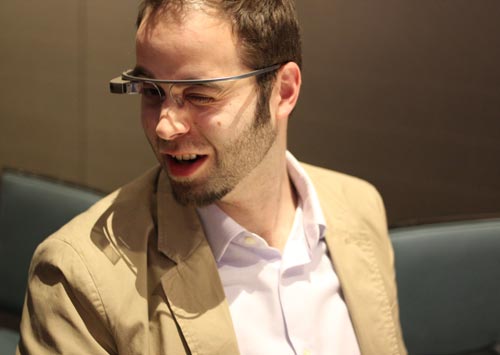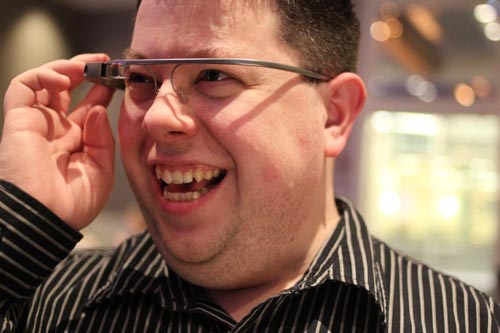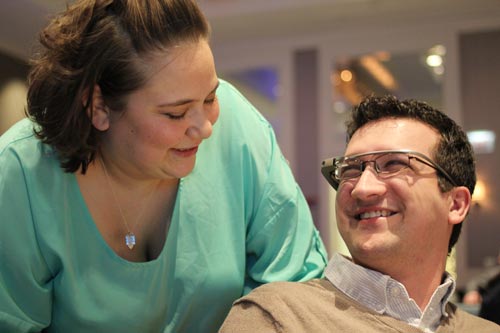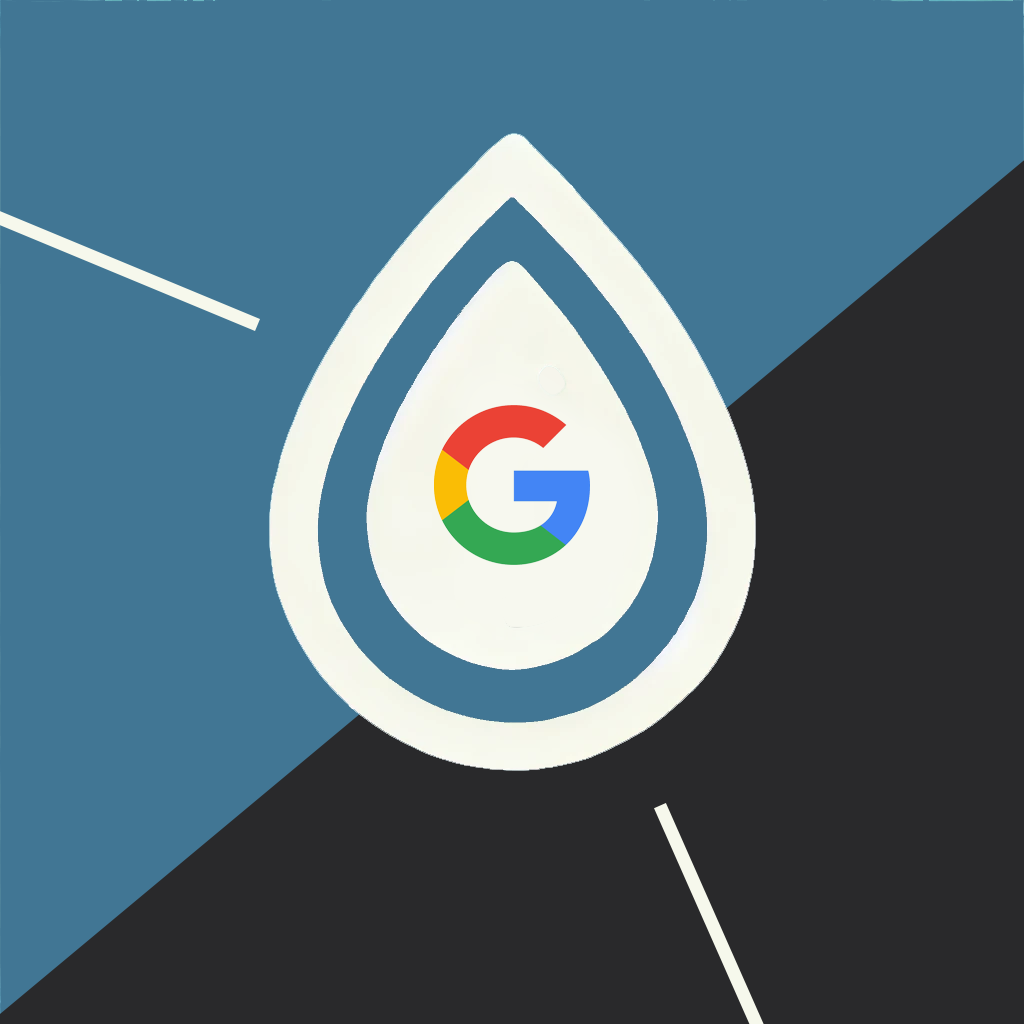Google Glass and the Future of Web Design
Bill Casey CEO & Partner#Industry Insights

After trying out Google Glass, we've got some thoughts on how it's going to affect the future of the web.
Recently, I was fortunate enough to be invited to participate in Google's Glass Explorer Program, meaning I was allowed to buy Glass before it's widely available. Realizing Glass and other emerging non-standard user interfaces have big implications for the future of web design, I jumped at the chance to get one… That and the fact that I'm a sucker for new technology. After having it for over a month now and observing how people use it, I've come away with a few insights:
1) It's gonna take some getting used to
This is not a very deep insight, but how Glass looks on your face and just the experience of trying them is really the first thing anyone notices. We had our company holiday party recently and Glass was passed around. Here are a few shots of some Diagram folks trying them on for the first time.
For Dan and Kendall, just aligning the screen with your eye for optimal viewing is a challenge…


Steve gets giddy with new toy excitement…

And Rob becomes a babe magnet (or so he thinks)…

But the most striking thing you'll soon notice is the odd social interaction that occurs when someone wearing Glass is directly facing you and seems to stare right though you. Focusing on a little one-inch square directly in front of your eye effectively blinds you to the rest of the world beyond. I can see a lot of moments of misinterpreted creepiness when someone wearing Glass looks like they have you locked in an unblinking, zombie-like stare, but in reality they're innocently reading an email. You can't really tell for sure what they're looking at, so it can be a bit unsettling.
2) The best user interface is no user interface
I heard this said at a design conference, and Glass confirms what the speaker was talking about. For simple tasks like taking a casual picture, using Glass is a fantastically easy and natural experience. There's no more pulling out your smartphone, powering up the screen, going to the camera app, aligning the photo subject in the camera sites, clicking the button, and then deactivating and returning the phone to your pocket. Instead, you just look at what you want to take a picture of and say "OK Glass, take a picture". Done. Voice control and a few simple touch gestures on the frame of Glass comprise the entire user interface. There is no screen to touch, no keyboards or mice. Using Glass is a natural extension of your physical world as opposed to focusing on a smartphone or computer screen. Glass takes this even further by actually creating an augmented reality experience meant to enhance your real world environment. The GPS turn-by-turn directions that seemingly float in front of your face are pretty remarkable. Similarly, having recipes delivered to a heads-up, hands-free display as you're cooking seems like a great application. Taking a look at the currently available Glass apps shows there are a growing number of creative usage ideas. Some are great, and others are downright silly, but it’s an evolving, trial and error phase that is bound to improve and change the way we use technology.
3) Wearable technology will be big
Whether or not Glass takes off in its present form is debatable at this point, but I'm convinced that wearable technology is going to become more and more common. For many of us, a smartphone is basically an extension of ourselves. It has become an ever-present tool that we rely on and keep with us at all times. Leaving the house without your phone has become as unsettling as leaving without your pants. Therefore, the concept of having "connected" technology on your body is not all that surprising or unexpected. Smart watches are considered the next big leap into wearable technology, but this is really just a less functional smartphone strapped to your wrist. Glass attempts to become part of your everyday world in a more natural, all-encompassing way than simply carrying a phone in your pocket. We've already crossed into the always connected, immediate information age, but we still rely on carrying a device to allow us to connect. Of course, Glass or any other wearable technology is still a "device", but having it connected to your person and able to deliver an always-on interactive experience that integrates with your day to day life closes the gap between human and technology even further. The question of whether or not this is necessarily a good thing would be the subject of a different blog, but this is definitely the direction we're heading, and Glass is a big leap forward.
4) What is the future of Web Design?
The emergence of mobile devices drastically changed the world of web design. We've gone from what was essentially desktop publishing for web browsers, to a responsive/adaptive approach to delivering content on a variety of different screens. Glass potentially changes this paradigm yet again. It's becoming more and more difficult to think in terms of design as layout, screen dimension, image size, etc. when the spectrum and context of the user interface is so diverse. Designing a traditional website to be viewed on a computer screen has little relevance to what would be displayed on Glass. In this case, small bits of content along with an augmented reality display dictates the design. There are no sidebars, banners, forms to fill out, or long scrollable pages. More than ever, we're going to need to adjust to the user's context not only to decide how to display the content visually, but how much content to display and whether or not that content is even relevant to the user. This already happens (or should be happening) as we design for the Omni-channel world, but a screen like Glass brings with it a whole new set of challenges. It’s easy to dismiss the challenge by assuming Glass's web display will only be used for simple content such as messaging, reading brief articles, or scanning images, but, as we've repeatedly seen in the last decade, people will push the boundaries and do things we never thought would happen. While I don't know exactly what Glass or other coming technologies will actually do to web design, I do know we need to stay open minded and prepared to change.
Related Posts

The Google Leak and Creating Content That Doesn't Suck
This year's leak of Google's internal SEO documents underscored the need for web content that doesn't suck. But here's what else we learned...

User Onboarding Process: Guiding Visitors Through Your Website
We offer some tips on how to design a website in a way that helps users intuitively understand how to use it to accomplish their goals.
Results Matter.
We design creative digital solutions that grow your business, strengthen your brand and engage your audience. Our team blends creativity with insights, analytics and technology to deliver beauty, function, accessibility and most of all, ROI. Do you have a project you want to discuss?
Like what you read?
Subscribe to our blog "Diagram Views" for the latest trends in web design, inbound marketing and mobile strategy.
